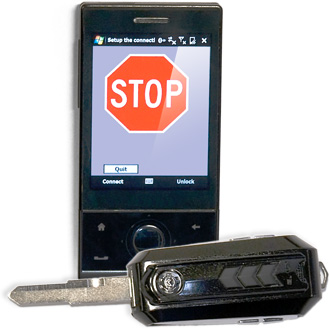
University of Utah researchers believe they have developed the key to keeping teenagers off their cell phones while driving.
Key2SafeDriving is an ignition key that prevents teenagers from talking on their cell phones or sending text messages while operating a vehicle.
The university has obtained provisional patents and licensed the invention to a private company that hopes to see it on the market within six months at a cost of less than $50 a key, plus a yet-to-be-determined monthly service fee.
Xuesong Zhou, an assistant professor of civil and environmental engineering co-invented the system with Wally Curry, a University of Utah graduate now practicing medicine.
At any given time, about 6% of travelers on the road are talking on a cell phone while driving, and about 10% of teenagers who are operating a vehicle are talking or texting, Zhou says.
Studies have shown drivers using cell phones are about four times more likely to get into a crash than other drivers.
“As a parent, you want to improve driving safety for your teenagers,” Zhou says in a statement. “You also want to reduce your insurance costs for your teen drivers. Using our system, you can prove that teen drivers are not talking while driving, which can significantly reduce the risk of getting into a car accident.”

Curry’s initial idea was a global positioning system that would detect a moving cell phone and disable it when at driving speeds. However, the technology could not distinguish if the cell phone user was driving a vehicle, or was a passenger in a moving car, bus or train. Developers say that problem is overcome by Key2SafeDriving.
The plan is to license the system to cell phone service providers, rather than directly sold to consumers, says Ronn Hartman, managing partner of Kaysville, Utah-based Accendo LC, which is providing early stage business consulting and seed funding.
Hartman envisions gaining backing from the automobile and insurance industries so that Key2SafeDriving data can be compiled into a “safety score” that could provide discounts for motorists with good ratings.
The Key2SafeDriving system connects wirelessly with each key user’s cell phone via either Bluetooth or radio-frequency identification technologies.
For a vehicle’s engine to be turned on, the driver must either slide the key out or push a button to release it. The device then sends a signal to the driver’s cell phone, placing it in “driving mode” and displaying a “stop” sign on the phone’s display screen.
While in driving mode, drivers cannot use their cell phones to talk or send text messages, except to call 911 or other numbers pre-approved by parents or guardians.
Incoming calls and texts are automatically answered with a message that reads, “I am driving now. I will call you later when I arrive at the destination safely.”
When the engine is turned off, a “car stopped” signal is sent to the cell phone, returning it to normal communication mode.
The device cannot be tricked by turning the phone off and on again because the phone will receive the “driving mode” signal whenever the car key is extended.




